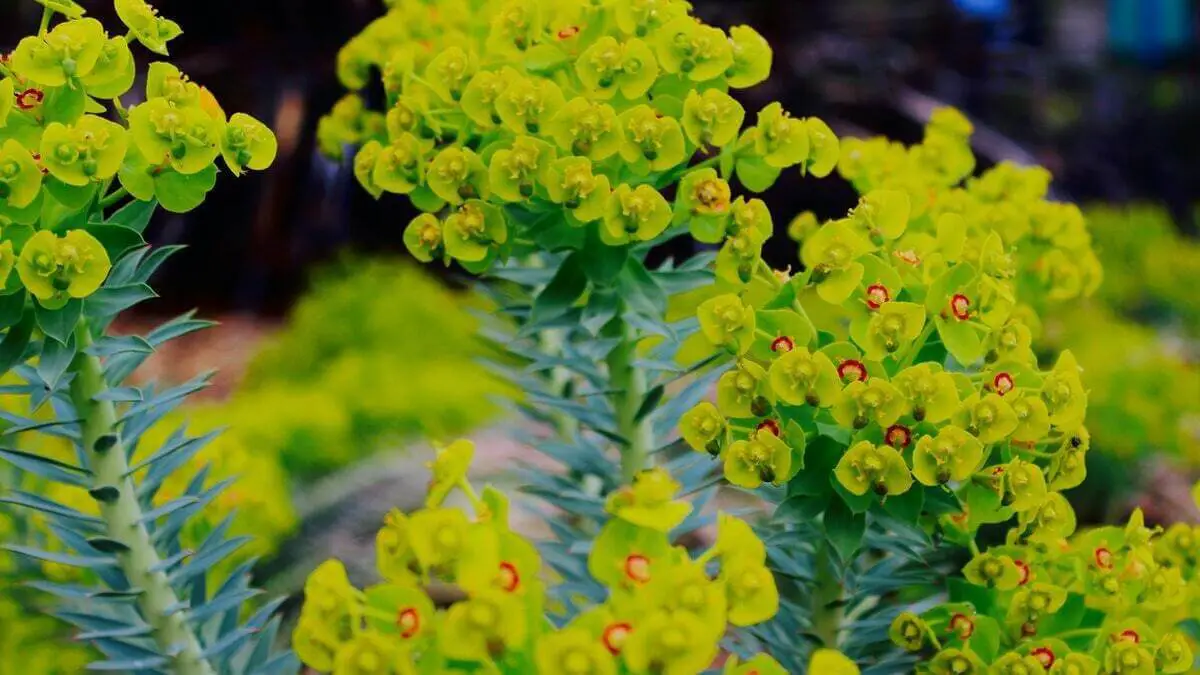Growing Gopher Plants
The Gopher Plant has its native roots in the Mediterranean region and Middle East Asia. Some people may find the name to be interesting while others may feel dull and boring! In fact, some people think the name represents the fascinating character of this plant.
Whatever may be the nature of its name, it is an aesthetically pleasing plant. It has impressive greyish blue lance-shaped leaves. Its flowers have bright yellow shade. This yellow shade changes according to climate and soil. Science officials recommend these plants for USDA zones 7 – 10. Overall, the look of the plant is distinctive.
The Biological name of the Gopher plant is Euphorbia rigida. Its former name was Euphorbia biglandulosa. It is basically a perennial succulent. Euphorbia rigida belongs to the Euphorbia genus family. This plant family is named after a Greek physician called Euphorbus. He introduced Euphorbian plants to the world of science. This plant also gained the Royal Horticultural Society’s Award for its interesting characteristics and unique foliage.
North Americans treat Gopher Plants as ornamental plants. They use it to decorate their gardens and homes. Some people also grow these plants in Pots, inside their home campus.
Table of Contents
Gopher Plant – Characteristics
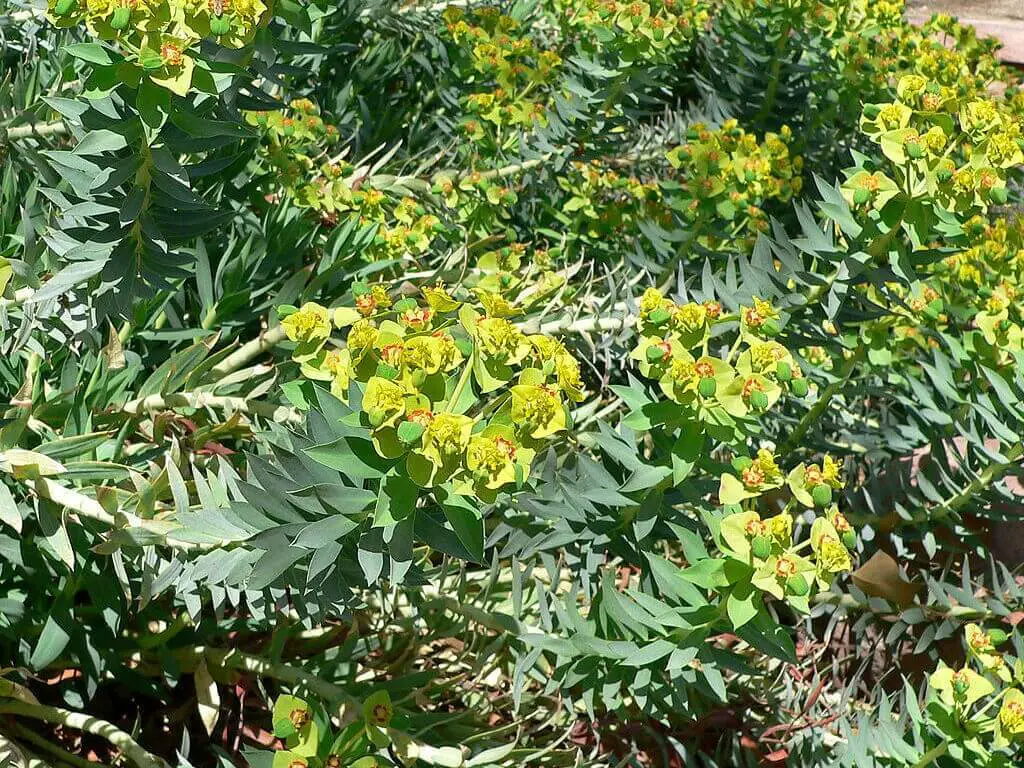
Photo by Stan Shebs (Wikimedia Commons) (CC BY-SA 3.0)
This Plant looks like a shrub, standing upright with succulent-like posture. It also has various forms and names. They include silver spurge, myrtle spurge, milkweed, gopher spurge. Each form has its own distinctive character.
It can grow sprawling out, covering the whole ground. It can also grow spiraling around thick stems, climbing up to two feet or more. In some cases, it will exhibit both these characters. In fact, there is a separate fan base for these interesting characteristics of this plant.
Gopher Plant is basically a summer plant. In spite of it, it can withstand cold temperatures as low as chilling 10-degree Fahrenheit. This unique character itself is enough to call it an all-rounder’ plant. Hence people feel It as an ‘easy to maintain’ plant.
Gopher Plant – Dangers
Any form of Euphorbia, including Gopher Plant, is toxic. So, keep small children and domestic pets clear of these plants. If you happen to break its leaf, you can see a milky-sap liquid pouring out. Even though this milky-sap liquid is said to have medical uses, it can cause skin allergy or irritation. So be precautious, while growing these plants.
Eco Benefits of Gopher Plant
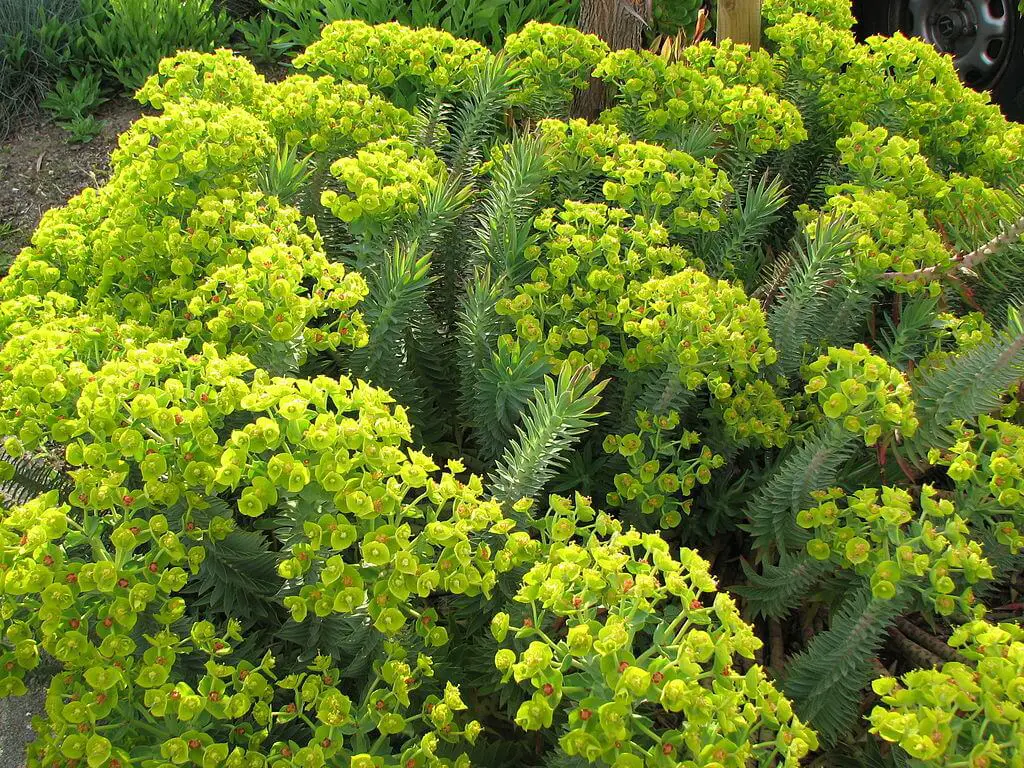
Photo by Seán A. O’Hara (Wikimedia Commons) (CC BY 2.0)
Small birds and bees love to taste the nectar of this plant’s whitish-yellow flower. Some small insects also find shelter inside its broad shady leaves.
Scientists study these plants for biofuel, electricity generation, medicine, and many other applications. To maximize the ecological output, some scientific institutions continuously monitor and expand the study range.
Gopher Plant Propagation
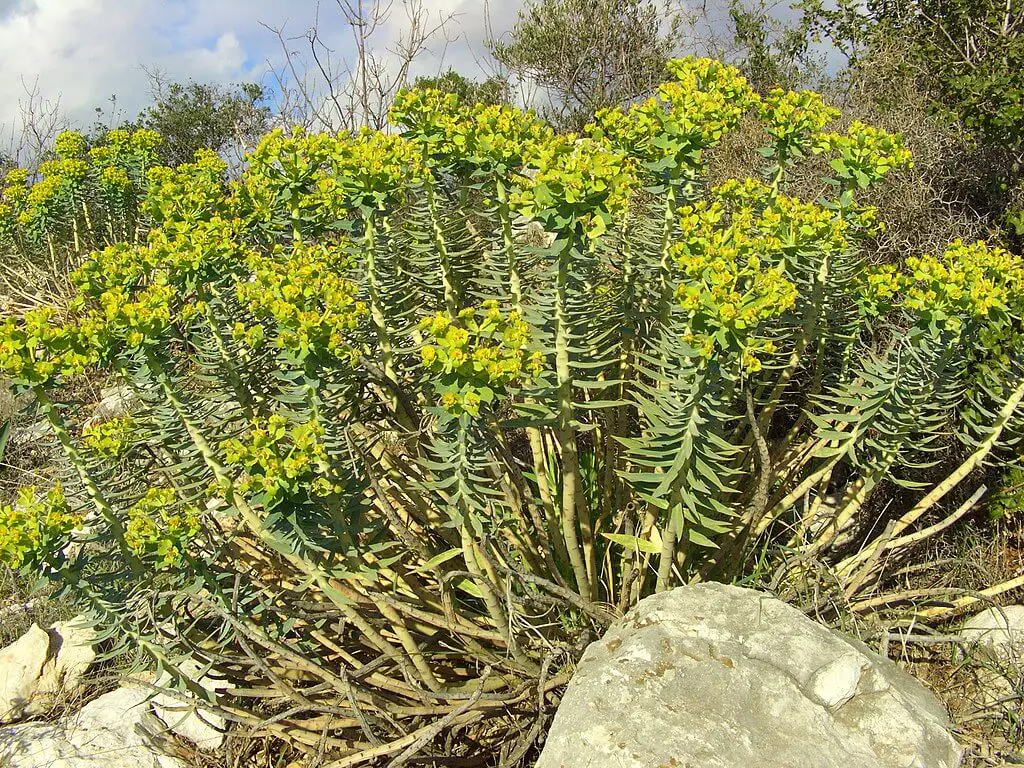
Photo by GFDL (Wikimedia Commons) (CC BY-SA 3.0)
You can purchase either as cuttings or seeds. If you opt to buy cuttings, dip the stem ends in 0.1% naphthalene acetic acid powder. After that, plant it in a succulent planting medium (A mixture of peat moss, perlite, and sand) container.
Place this container in a seedling heating mat. Set the temperature to about 77 F. This will speed up the rooting process. As far as possible, avoid exposing the arrangement to direct sunlight. Maintain soil wetness by pouring minimum water. Avoid over flooding.
In this way, the cuttings root about within a month. Transplant these cuttings after the frosty winters in your garden. However, we recommend you transplant during summer for best results.
If you purchase seeds, most probably you can find germinating instructions inside the packet itself. However, if you keep a dedicated manual handy, you can use it for any kind of plantings.
Typically, these plants tend to self-seed after establishing themselves. You can also divide the plants for propagation. Ideally, late spring is the best season for dividing the plants.
Soil, Temperature
Gopher plants can survive almost any type of soil including chalk, sand, clay, and loam. However, they look strikingly beautiful in rock gardens and pebble mulch decorated places.
They like to grow under full sunlight. Still, they can manage partially shady surfaces. In spite of these habitual characteristics, they can survive frosty weather and ice-cold temperatures.
Caring Gopher Plants
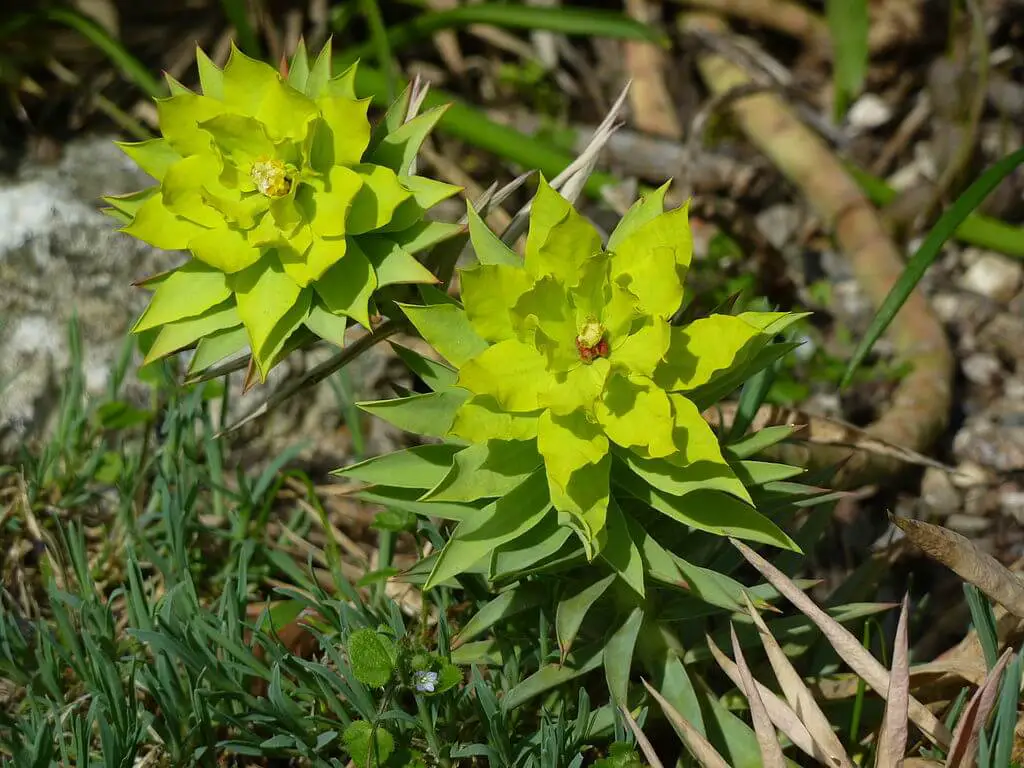
Photo by Magnus Manske (Wikimedia Commons) (CC BY-SA 3.0)
Typically, these plants can thrive in extremely drought environments. However, watering them occasionally replenishes them with fresh energy and promotes new growth. This is one of the bestselling low maintenance plants available in the commercial market.
These plants also have a tendency to grow sprawly. Some people particularly like this sprawly growth habits. You can also trim down the elongating stems as required. By using garden gears, you can avoid direct contact of your skin with the itchy milky sap.
Normally, fertilizer is not needed. If you prefer to fertilize, you can apply well balanced, diluted 10-10-10 fertilizer, twice a month during the initial growth cycle.
Pests and Diseases
Some pests like spider mites, nematodes, mealybugs, aphids, Etc., may occasionally infect Gopher plants. Mealybugs can often damage almost any normal plant. You can use insecticidal soaps to effectively disinfect pests.
These effective insecticidal soaps can also deal with fungal and bacterial diseases on plants.
Interestingly, these plants can repel rodents and small animals like deer naturally. Hence, you can maintain these plants worry free with minimal care.
Be aware that, overwatering can damage the roots of these plants. Even if the plant survives, the resulting bacterial and fungal infections can weaken your plant. As a result, the plants may die.
Ornamental Usage
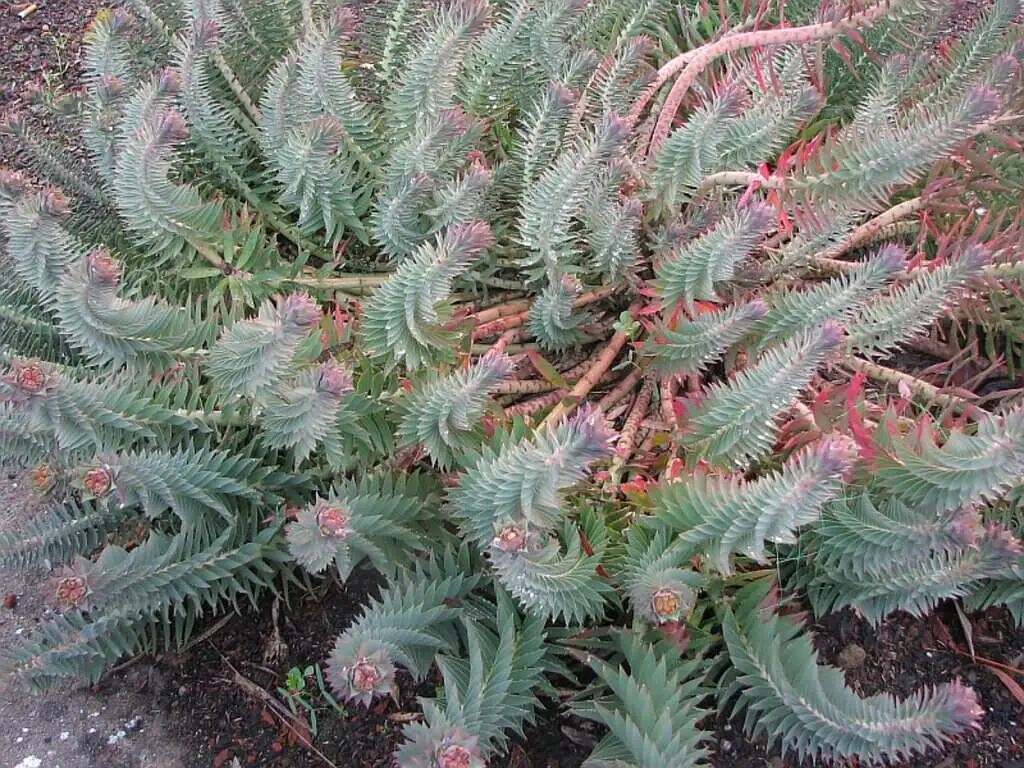
Photo by Seán A. O’Hara (Wikimedia Commons) (CC BY 2.0)
Gopher plants are normally considered as a weed in their native region. But in Europe and North America, people use these plants for decorating their gardens and other spaces. These plants are also well known for their “low-maintenance” characteristics and soothing attractiveness.
In fact, these are “Plant and forget” type, self-sufficient plants. In spite of their low maintenance characteristics, gardeners sell these plants at a relatively low price due to the almost never deficit supply.
These plants provide spectacular looks when grown in rocky Gardens. To impress your guests, you can plant them near gates and borders. They never fail to provide beautiful welcome’ looks.
By planting them in planned random manner, some architects specialize in designing naturally beautiful asymmetric looks’. Sometimes architects extend their designing patterns to decorate the building interiors also with these plants.
On personal levels, you can decorate both your interiors and exteriors with these plants to suit your taste.
Caution
These plants are toxic in nature. Upon ingestion, these plants can endanger lives. Therefore, keep children and domestic pets away from them. Also, the broken or cracked foliage releases harmful milky-sap liquid. This liquid can cause several skin diseases like itching, irritation, skin cancer Etc.,
Similar Plants
All about Forsythia Hedge
All about Dietes Bicolor Plants

